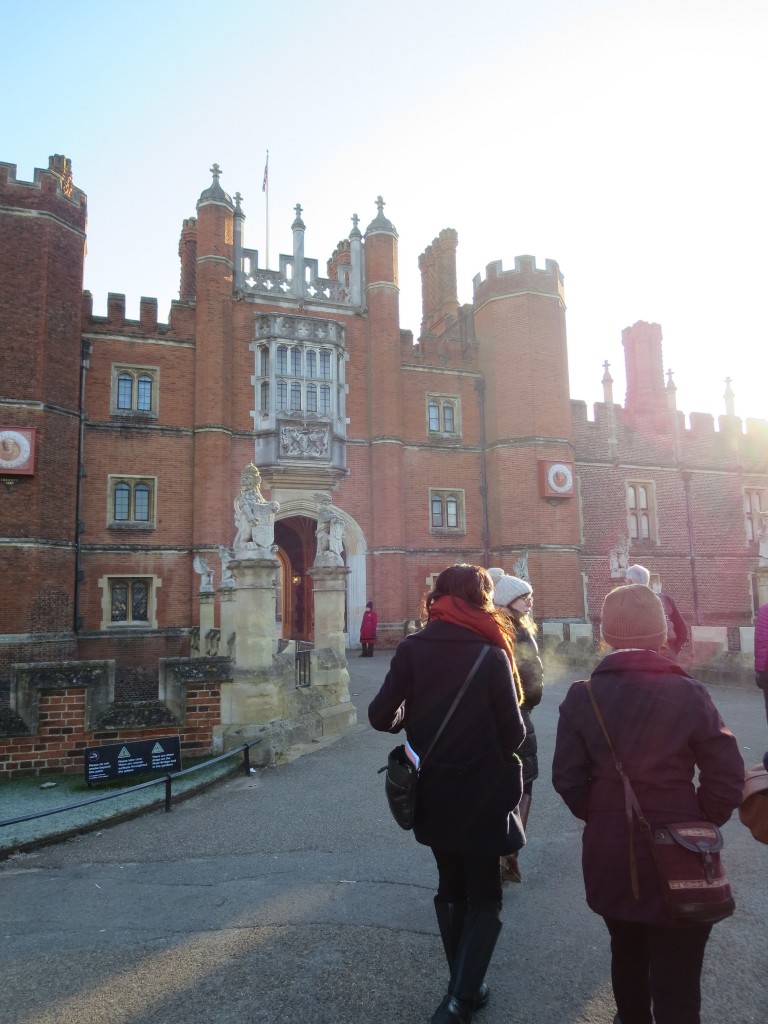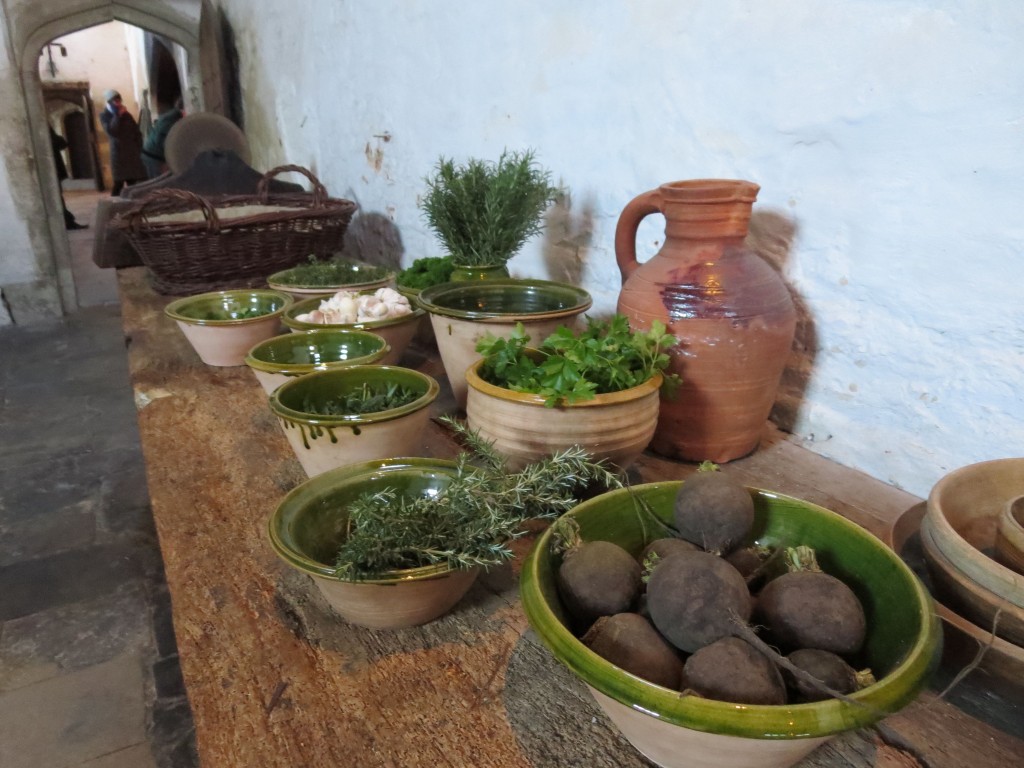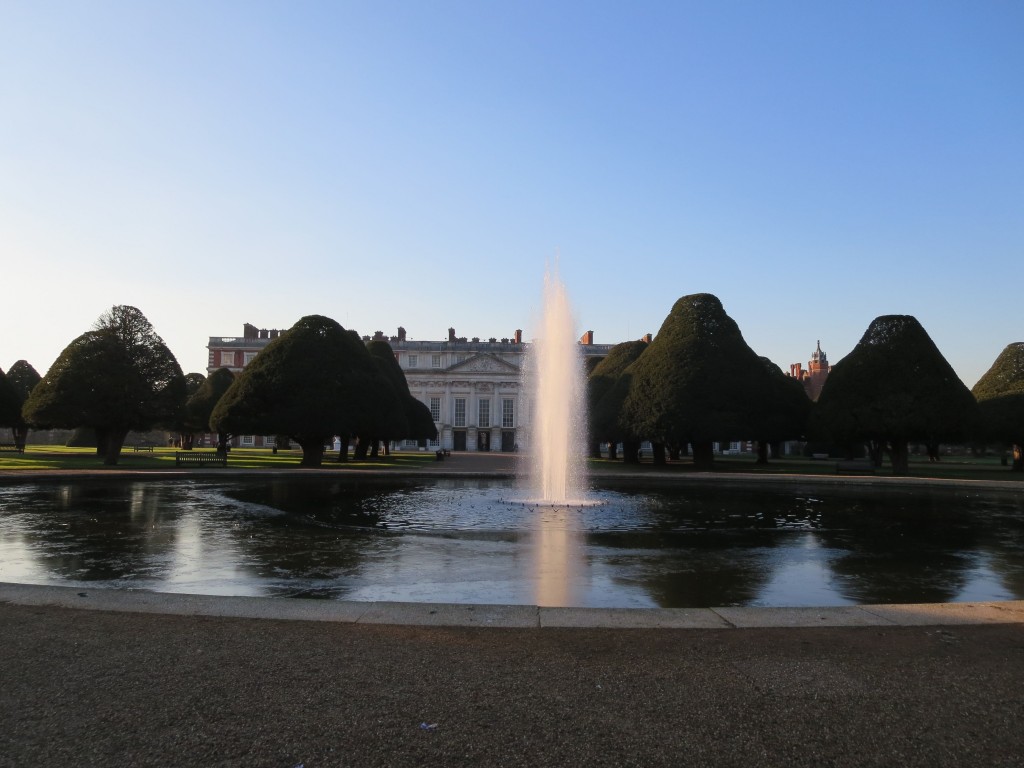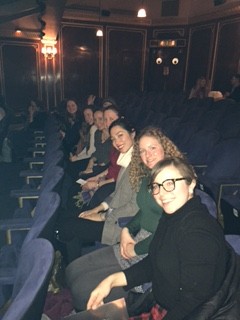London Day 4: Taking in Tudor and Baroque England
Still feeling inspired by our visit to the Dennis Severs’ House the night before, our class boarded the train to Hampton Court Palace, looking forward to a new set of stories in a different location. The royal palace, notoriously occupied at times by Henry VIII and several of his wives, is one of only a few sites to have significant amounts of its sixteenth century features surviving. No longer occupied by the royal family, its history as a royal site extended over a century beyond the Tudors and greatly impacted how it looks today.
Hampton Court Palace, begun in 1515 by Cardinal Thomas Wolsey, and gifted to Henry VIII in 1529.
After first touring the Tudor kitchens and Henry VIII’s apartments, we joined the Deputy Chief Curator and Head of Collections, Sebastian Edwards, for a tour of the King’s Apartments once occupied by William III.
Some examples of food that would have been used in preparation for meals in the Tudor Court. The kitchens are still used for cooking historic meals today.
Henry VIII’s wine cellar, where we learned wine would frequently be stored for less than a year before becoming a “vintage.”
In the apartments, we were struck by the style and opulence that increases as courtiers gain access to more of the staterooms. With each room, the chamber becomes slightly smaller, more exclusive, and highly stylized. Over a century after Henry VIII’s own displays of power on the other side of the palace, similarities of exclusivity and a monarch’s power rooted in their lineage were apparent.
 The first and most public chamber in William III’s state apartments. Many of the weapons on these walls dates to the period and were intended as a display of the military power of the country after the restoration of the monarch.
The first and most public chamber in William III’s state apartments. Many of the weapons on these walls dates to the period and were intended as a display of the military power of the country after the restoration of the monarch.
With some time to wander on our own, we took in the garden and various façades of the house; some Tudor, some baroque and constructed by Christopher Wren. Other details revealed evidence of nineteenth and twentieth century renovations.
A very different view of Hampton Court from the baroque gardens.
Though primarily known for the drama enacted by the court of Henry VIII, we valued seeing the variety of spaces required over time to support the court. The building’s incarnations and the lives of the historic figures who lived there felt more tangible when we discussed how they were sustained. From food to gardens, the royal palace tells the story of a variety of eras and people in one structure.
Members of the class at the Theatre Royal Haymarket’s production of Mr. Foote’s Other Leg.
With this in mind, part of the class went off to the theatre that evening to take in a comedy on Georgian London. Even in a theater in the twenty-first century, we couldn’t help but see how the eighteenth-century theater, much like a royal palace, had traces of renovations and additions from various generations of styles. The history of England is long and layered. When you look around, you can find its stories manifested in nearly every building – whether for courtiers or theatregoers!
By Michelle Fitzgerald, WPAMC Class of 2017






Leave a Reply